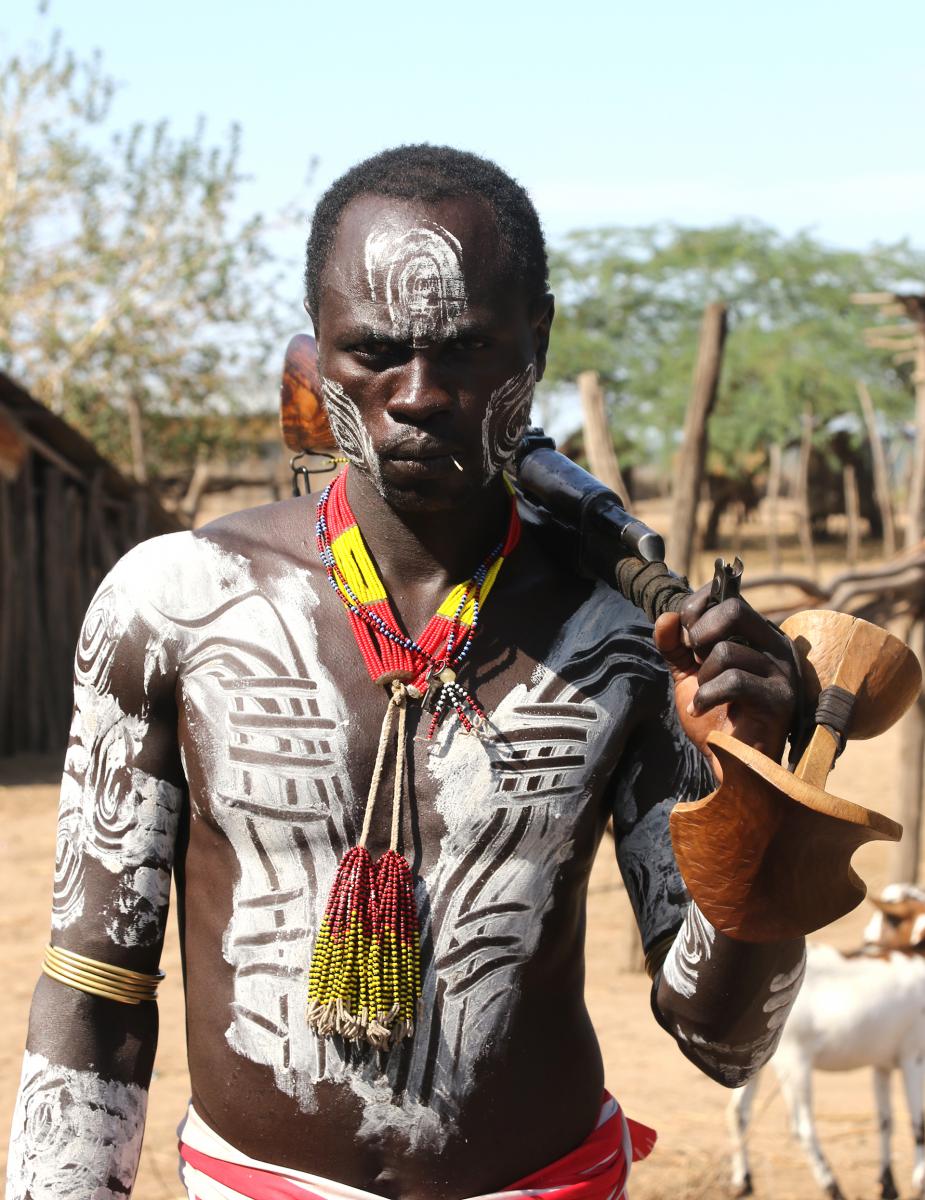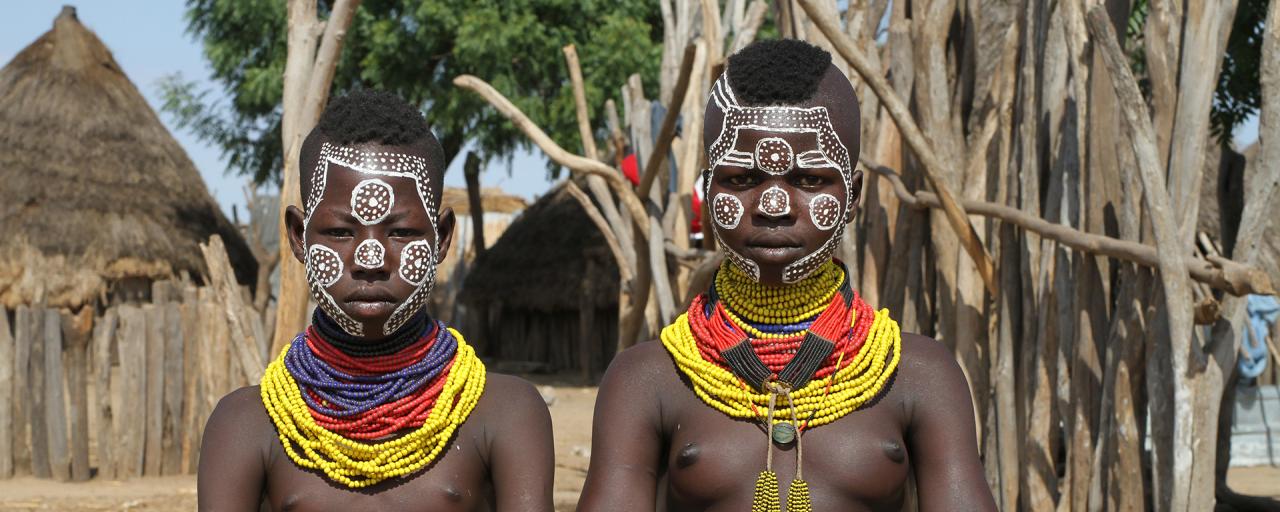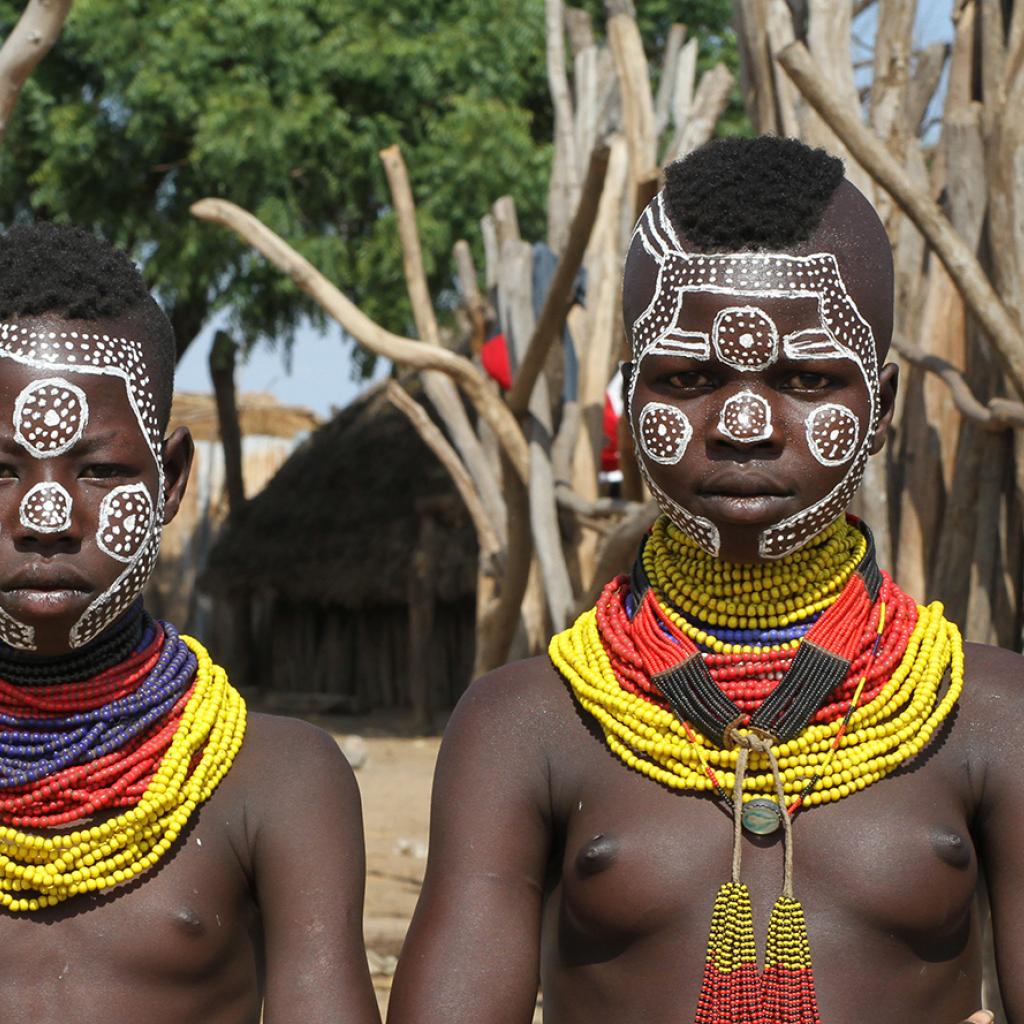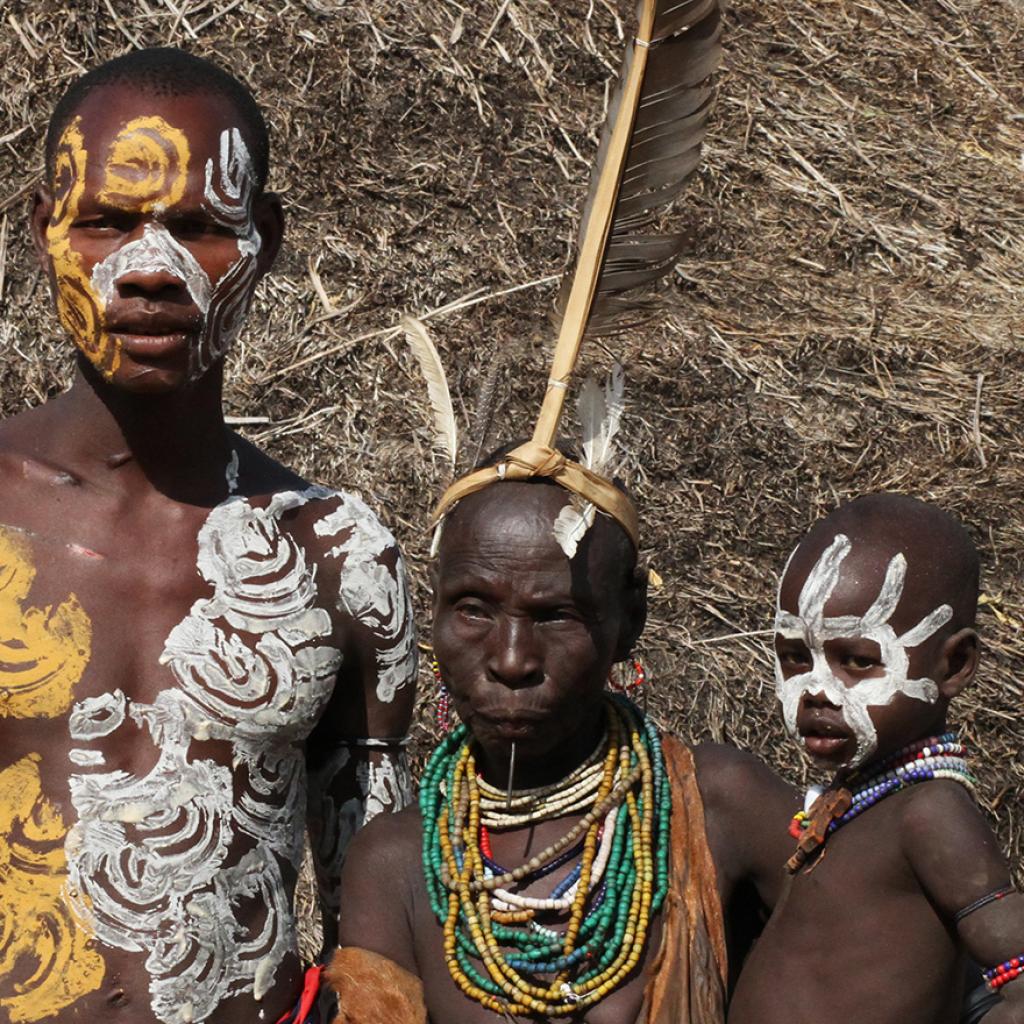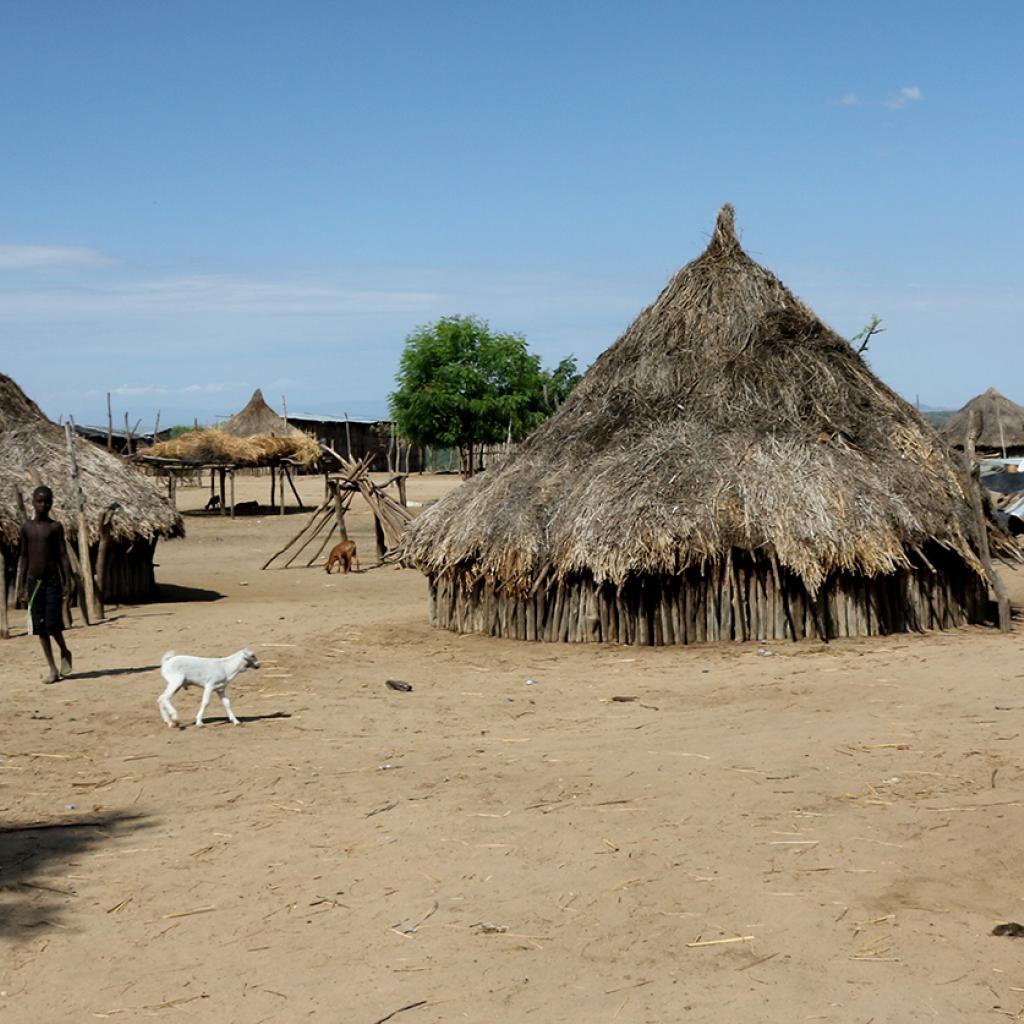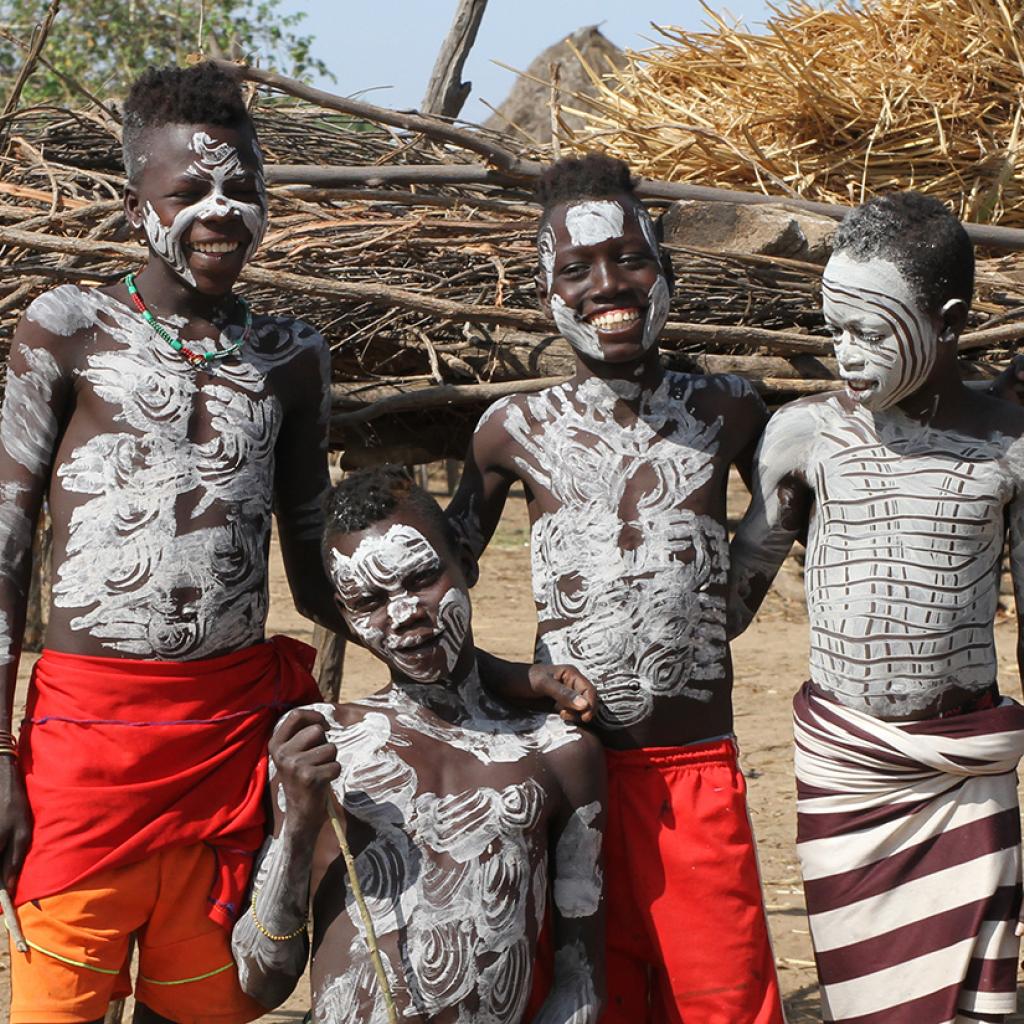The Kara, often mistakenly called Karo, are a semi-nomadic population who lives on the Eastern shore of the Omo River, in Southern Ethiopia; it is estimated that this tribe is made up of a small number of people, from 1,000 to 3,000, and this means that they are the smallest ethnic group in the Omo Valley.
It seems that at one time the Kara were united to the Hamer, or Hamar, but, at a certain moment in their history, not easily placed on the calendar, these two tribes separated to search for better lands and pastures, the Kara moved downstream to the Omo River while the Hamer positioned themselves on the hills.
The similarities between the Kara and the Hamer, but also with the Banna and the Bashada are numerous: linguistically and culturally in fact the language of the Kara can be considered as part of the Hamar-Banna-Bashada cluster, the languages of these tribes are mutually intelligible, although some differences have arisen over the centuries; also the ceremonies and rituals of the Kara are similar to those of the Hamar, the Banna and the Bashada.
These similarities and common origins explain the close and good relationship between these tribes; the Kara, define the Hamer as "mountain dwellers" while the Kara are defined as the people who eat fish, Kara means fish in the local language.
The "fish eaters" have an original way of fishing: they use long sharp sticks with which they pierce the fish.
In the past the Kara were traders and intermediaries and occupied a key position in the network of trade routes that crossed these areas and reached today's Kenya and South Sudan.
Due to serious pestilences the number of members of the Kara tribe was greatly reduced, their herds were also decimated.
Following these events, that weakened their tribe, the Kara, who initially lived on both sides of the Omo River, were gradually pushed to abandon the Western shore following the expansion of the territories of the Nyangatom, a population more numerous and better armed.
The Nyangatom were the first group in the area to get hold of firearms, in particular automatic rifles from Sudan, while the Kara still used traditional lances.
The plagues and the loss of the territory have changed the way of living of the Kara, from the prevalence of pastoralismand from the continuous search for new pastures the Kara have adapted to fishingand cultivation.
Their life is marked by the floods of the Omo River and the consequent alluvions; after each overflow of the river, when the water recedes, the Kara peasants pierce the dark mud with sticks and plant sorghum or maize seeds, this is a simple, ancient and little different technique from what the Egyptians did along the Nile in antiquity.
The Kara cultivate sorghum, corn, beans and pumpkins, of which sorghum is the main food with which they cook porridge, using milk or water; even the honey is easily found and supplements the diet of the population.
Sorghum is also fermented to produce local beer, that is also used during ceremonies.
Following the spread of the presence of the tsetse fly, that attacks large cattle, the Kara prefer to raise goats and sheep while they have only a few cattle, consequently the meat of cattle is consumed only on special occasions, while milk and blood are drunk more frequently.
The ceremonies mainly concern the rites of passage to adulthood, while, almost always, they do not have a religious value; religion is quite simple, they believe in a creator god, respecting ancestors and sorcery and magic.
The most important ritual in the life of the Kara is represented by the passage to adulthood of the boys, the jumping of the bull, a ceremony similar to that which is practiced by the Hamerand the Banna; the celebration of this ritual is an event that involves the entire village and has important social implications.
In the past the practice of infanticide was common, the Mingi children, who are impure and carriers of misfortune, born without the blessing of the elderly or out of wedlock, were thrown into the waters of the Omo River or abandoned in the savannah.
This practice has been forbidden but unfortunately the ancient beliefs are difficult to eradicate and some cases of infanticide still occur today.
The huts of the Kara villages are built by weaving wooden poles subsequently covered with a layer of mud, while the conical roof is made with straw and the branches of the trees; the fences for the cattle and the palafittes, used as granaries, complete the settlement.
What most characterizes the Kara is their care and attention to physical appearance, their body painting and scarification techniques are elaborated and are still practiced today.
On the occasion of the ceremonies the Kara paint their bodies using the white color, obtained from the plaster, the yellow, coming from a local mineral, and the red, obtained from the earth rich in iron.
The designs range from simple dots to complicated weaves of lines and circles; both the face and the body are painted, both men and women paint their bodies.
The Kara also make a hole in the lower lip where small wooden sticks or flowers are inserted; this is not the only form of body modification practiced by this tribe.
Scarification is still a widespread practice: for women it has an exclusively aesthetic value, they perform the scarification to be more attractive to the eyes of men; while for men scarification has an aesthetic value, to increase their sex appeal, and to identify the value of a man, a sort of decoration, made with special scars carved into the flesh of the shoulder or abdomen, to identify the man who killed an enemy or one of the huge crocodiles that populate the Omo River.
For the Kara also the hairstyles are a very important element for the care of their appearance, the men's hair is gathered in thick braids, kneaded with earth and butter, painted with natural colors and decorated with feathers and flowers; the result is a very elaborate and semi-permanent hairstyle that almost looks like a stiff helmet.
The Kara clothingis rather minimal, they wear a simple leather or fabric skirt that is sometimes embellished with beads or shells, while accessoriesplay an important role, both men and women wear many bracelets and necklaces.
The boys always carry their faithful AK47 with them, in reality it is more a status symbol than a weapon to be used against some enemy; it is necessary to possess one to be able to marry, as it shows that, if necessary, the boy is able to defend the village from rival tribes, cattle from thieves and to defend the other members of the village from dangerous animals.
